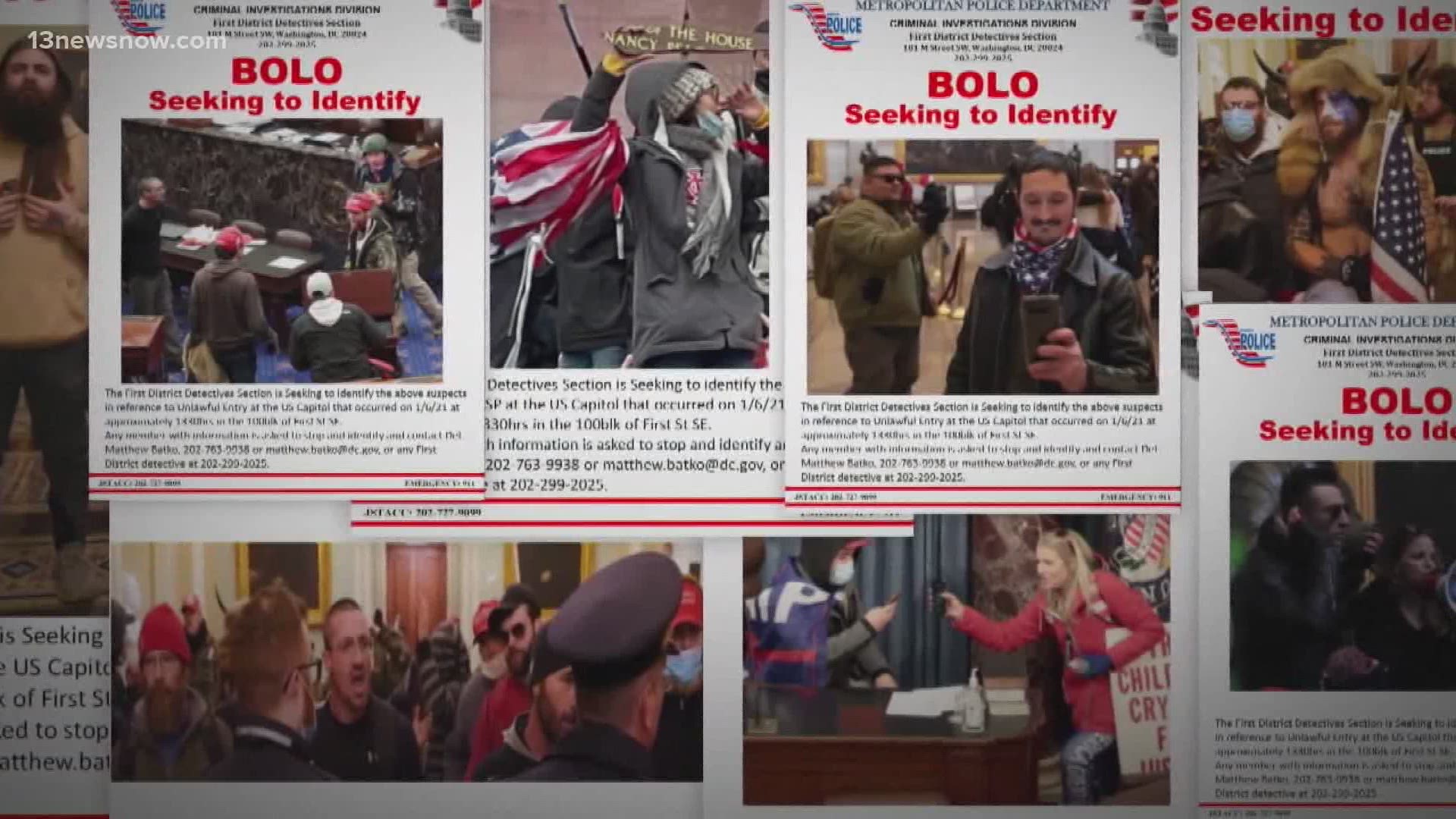NORFOLK, Va. — On Friday, The FBI reported 13 people charged with federal crimes related to the U.S. Capitol breach earlier in the week, and the investigation is just getting started.
FBI Director Christopher Wray vowed to punish people responsible for the "siege" on the federal building Wednesday.
“Let me assure the American people the FBI has deployed our full investigative resources,” he wrote.
Steve Foster, a former FBI agent supervisor, said the agency will form a task force with Metropolitan Police and Capitol Police. The Bureau of Alcohol, Tobacco, Firearms and Explosives and State Police will possibly be included also, said Foster.
“Of course, the order of business is to identify people who have committed federal crimes,” said Foster.
Capitol Police has been criticized for not detaining people caught in the act and allowing violators to go home. But Steven D'Antuono, FBI Washington Field Office Assistant Director in Charge, shared a clear warning for violators Friday.
"Just because you've left the D.C. region, you can still expect a knock on the door if we find out that you were part of criminal activity inside the Capitol," he said.
Foster said the "massive number" of photos and video in the public, including on social media, will help agents identify rioters.
“We know the media has taken photographs and video. We know that the Capitol has photographs and video," he said. "We know that individuals who participated in the protests and riots, also have videos.”
The FBI released photos, including the many shared on social media accounts, to find people of interest. It already helped capture 60-year-old Richard Barnett of Arkansas. A photo went viral of Barnett placing his feet on the desk of House Speaker Nancy Pelosi. He will appear in federal court on Tuesday, according to the FBI.
“There is massive amounts of what we call ‘metadata,’ said Foster. “That information is going to have to be uploaded into a database and we’re going to have to pick away at it.”
Foster said protestors who did not participate in the breach or commit crimes will likely be dragged into the investigation and called to help identify others, especially if they recorded events or were seen on video attending the rally. The FBI will seek witnesses to submit videos and photos.
Among the potential crimes committed Wednesday, Foster listed trespassing, assault on federal officers, potential threats to lawmakers, destruction of property, and disruption of government business.
“They’re going to have to figure out who those people were from the photos and videos, so they are able to charge them,” said Foster.
Foster said FBI agents will need to work diligently to identify rioters and the crimes committed in order to file charges, locate and take those individuals into custody. He predicts limited resources will come into play when considering such a large group of people attending Wednesday’s protest.
“Look for the leaders. Look for the individuals who actually did breach the barriers, who actually did destroy property, who actually may have assaulted someone,” said Foster. “I think that’s the way we have to approach this with the set of limited resources we have.”
Foster said FBI agents will prioritize organizers and said social media should play role in identifying them.
“Tracing some of the social media sites and seeing some of the emails and messages and the postings from before the rally can help identify some of the leaders,” said Foster.
ABC News reports former Trump staffers helped organize Wednesday's rally that preceded the attack on the Capitol. Foster does not think anyone in the White House or on Capitol Hill conspired on the breach, but he would not be surprised if federal agents requested information from the President’s staff in the process of the investigation.
“I think that there might be some subpoenas to the White House and the president’s staff because do not forget they helped organize some of this,” said Foster.
The timeline of the investigation will be difficult to predict, but he believes the FBI will allocate appropriate resources. He said the timeline will depend on several factors.
“First, agents must be able to identify that a crime has been committed and the person in this photograph committed that crime, and then be able to identify that person,” said Foster. “Then go to a grand jury and get a returned bill of indictment. Then go to a judge and get an arrest warrant and get it done.”
Foster predicts it will take up to two weeks for the first batch of arrests, but the entire investigation will take months.
He said FBI agents could use facial recognition to cross-reference persons of interest, but he said the people would already need to be in a database, which he said collects data from previous court records, arrests, and other sources, like employees in the defense industry or current or former military.
If people deleted the videos of photos from their social media pages, Foster said it won't help them much.
“Once you put something on the internet, you can never get rid of it,” he said. “It’s out there. It’s just a question of finding it.”

